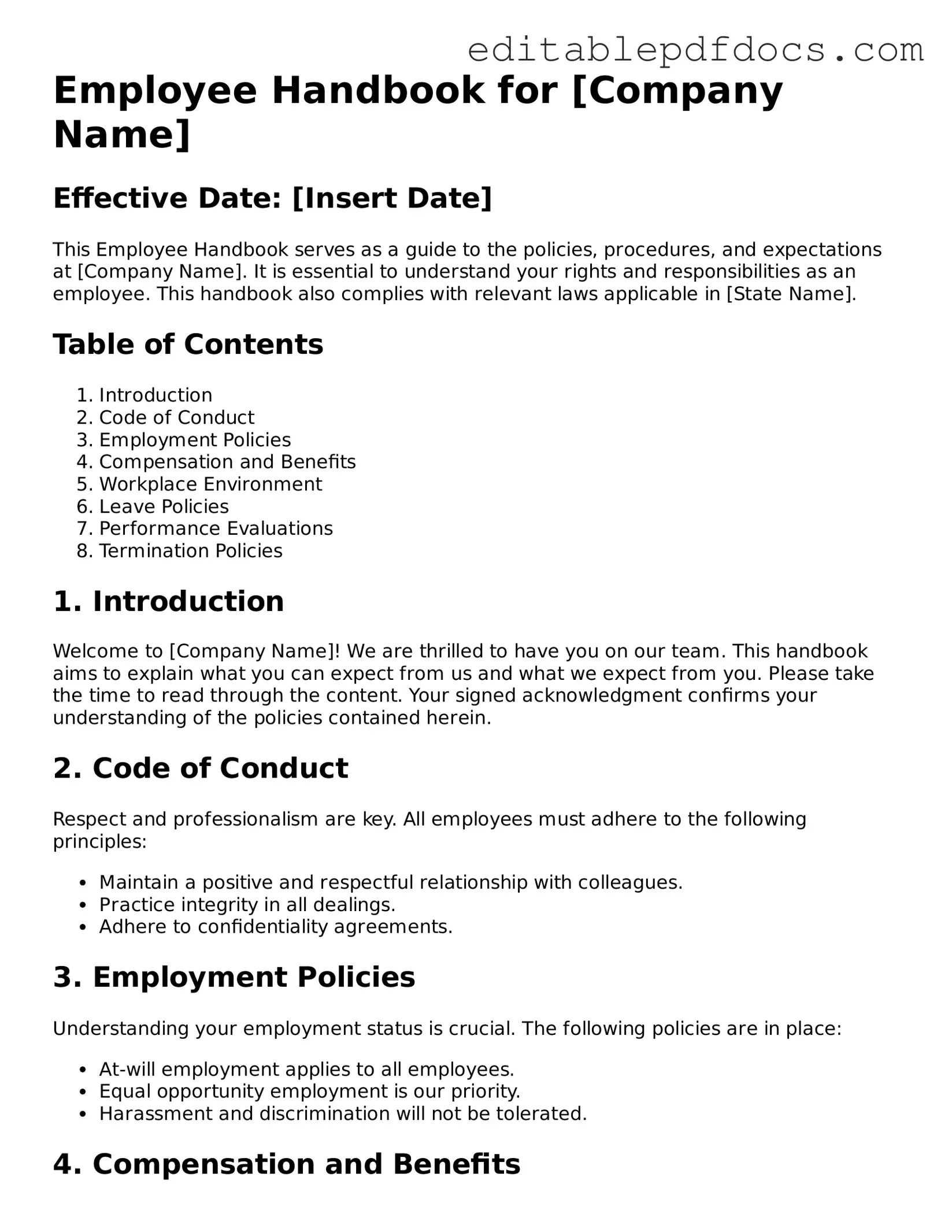Creating a solid foundation for workplace expectations and culture is essential for any organization, and an Employee Handbook serves as a crucial tool in achieving this goal. This document outlines the rights and responsibilities of both employees and employers, ensuring everyone is on the same page. Key aspects of the Employee Handbook include company policies, employee benefits, workplace conduct, and procedures for addressing grievances. It typically covers essential topics such as attendance, dress code, and anti-discrimination policies, providing clear guidelines for acceptable behavior. Furthermore, the handbook often details health and safety protocols, leave policies, and the process for performance evaluations. By providing this comprehensive resource, employers help foster a positive work environment while minimizing misunderstandings and legal risks. An effective Employee Handbook not only communicates expectations but also reflects the company's values and commitment to its workforce.
